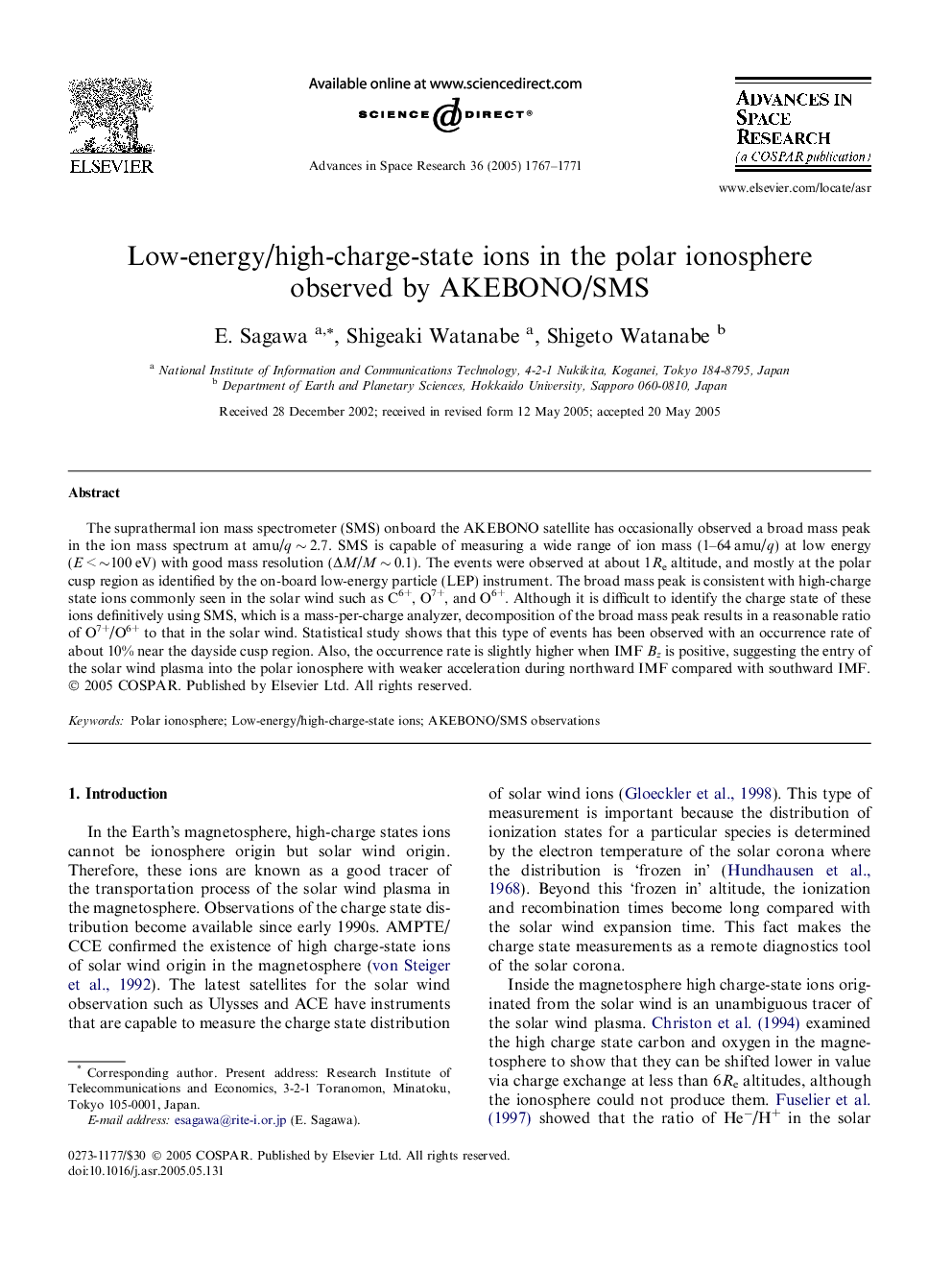| Article ID | Journal | Published Year | Pages | File Type |
|---|---|---|---|---|
| 1767731 | Advances in Space Research | 2005 | 5 Pages |
The suprathermal ion mass spectrometer (SMS) onboard the AKEBONO satellite has occasionally observed a broad mass peak in the ion mass spectrum at amu/q ∼ 2.7. SMS is capable of measuring a wide range of ion mass (1–64 amu/q) at low energy (E < ∼100 eV) with good mass resolution (ΔM/M ∼ 0.1). The events were observed at about 1Re altitude, and mostly at the polar cusp region as identified by the on-board low-energy particle (LEP) instrument. The broad mass peak is consistent with high-charge state ions commonly seen in the solar wind such as C6+, O7+, and O6+. Although it is difficult to identify the charge state of these ions definitively using SMS, which is a mass-per-charge analyzer, decomposition of the broad mass peak results in a reasonable ratio of O7+/O6+ to that in the solar wind. Statistical study shows that this type of events has been observed with an occurrence rate of about 10% near the dayside cusp region. Also, the occurrence rate is slightly higher when IMF Bz is positive, suggesting the entry of the solar wind plasma into the polar ionosphere with weaker acceleration during northward IMF compared with southward IMF.
